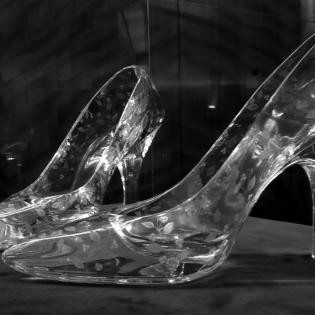An African Cinderella
Students read an African version of the Cinderella story so that they can compare versions and increase their sense of story.
The learner will:
- compare and contrast Cinderella stories and character traits.
- read-aloud copy of Mufaro’s Beautiful Daughters
- Steptoe, John. Mufaro’s Beautiful Daughters. Amistad, 1987. ISBN: 0688040454
Instructions
Anticipatory Set:
Sit in a circle on the floor and have children imagine they are sitting around a campfire in a time long ago before stories were written down. At the campfire, the group is going to retell a familiar story as entertainment for the evening. You are going to start the story of Cinderella and one-by-one the children continue around the circle each telling a small part of the story in order. Tell them they may add creative details and settings to make it more colorful, as long as the basic story stays true to the original. Encourage them to use details that help the listeners picture the people and events in their heads. When they are done with their turn, they look at the next person in the circle as a signal for that person to pick up the story line and continue.
Talk about the experience of telling a story aloud. Talk about the "oral tradition" of fairy tales; how they are spread and evolve over time until they are written down. Help the children recognize that the original story will change with each telling and many versions may exist around the world.
The Cinderella story has a "universal theme" of kindness and hard work winning over unkindness and laziness. Talk about why this would be a theme in stories around the world.
Befor you read Mufaro's Beautiful Daughters, tell the children to be ready to describe the characters in the story and to compare Mufaro’s Beautiful Daughters to Cinderella.
Show Africa on a map/globe and make it clear that Africa is a continent with many countries. The setting of this story is "long ago in a certain place in Africa." We don’t know which country.
Read Mufaro’s Beautiful Daughters aloud.
Discuss the story. Compare/Contrast the characters. Compare/Contrast the story with Cinderella. Ask them to compare how the actions of each character affected the whole community/others.
Discuss the fairy tale details: What events were magic and which could really happen? In what different ways was the king shown? Did anything happen three times? Did good win over evil? What is the lesson/moral of the story?
Ask children to reflect on what character in Cinderella is like the little snake. Discuss.
Philanthropy Framework
-
Strand PHIL.I Definitions of Philanthropy
-
Standard DP 02. Roles of Government, Business, and Philanthropy
-
Benchmark E.6 Explain why acting philanthropically is good for the community, state, nation, or world.
-
-
Standard DP 06. Role of Family in Philanthropy
-
Benchmark E.2 Identify examples of families supporting giving and sharing.
-
-
-
Strand PHIL.II Philanthropy and Civil Society
-
Standard PCS 05. Philanthropy and Government
-
Benchmark E.3 Discuss the importance of personal virtue, good character, and ethical behavior in a democracy.
-
-
